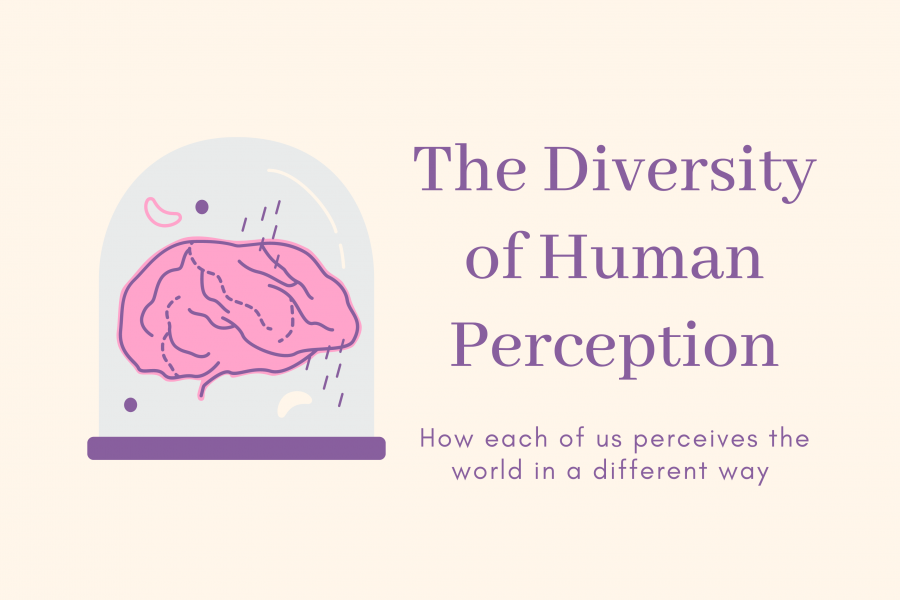Most of us are probably familiar with the phrase “everyone experiences the world in a different way”. Whether it is our experiences, our environments or our personalities, each one of us have qualities and perspectives that make us stand out as a unique individual.
What most of us fail to realize is that our literal experience of the world can also differ due to differences in mental processing. The human brain is so diverse that our cognition and our physical experiences, including sight, sound, touch, smell and taste can be experienced differently from those around us.
Here is a list of ways our internal and external perceptions differ.
Color Blindness:
When we think of the term “color blindness”, many of us assume that it means the inability to perceive color. However, color perception, like most things, is on a wide spectrum. Despite common belief, most people diagnosed with color blindness can still perceive color, albeit they are lower on the spectrum. On the lowest end of the spectrum are the achromats, who only see the world in black, white and shades of grey. On the opposite end of the spectrum are the tetrachromats, who perceive the world in 100 times more shades of color than the average person.
Each one of us are on this wide spectrum of color perception, yet many of us mistakenly believe that the way we perceive colors are exactly the same and that there is a clear cutoff for color blindness. We also tend to assume that the shades of color we perceive are the same, but in reality, we have no way of confirming that our reds, our blues and other colors are similar shades in our mind.
Synesthesia:
Around 2-4% of the world population experiences a psychological phenomenon called Synesthesia. Synesthesia is the intertwining of the senses, where stimulation of one sense can lead to an automatic and involuntary experience of a second sense. There are over 80 types of synesthesia. For some synesthetes, music can evoke colors and shapes, numbers have unique personalities, and names elicit different smells and tastes.
These experiences may seem bizarre for non-synesthetes, but for synesthetes, they are completely normal. In fact, many synesthetes do not realize that they perceive the world in a different way.
Internal Monologue:
Most of us have a voice inside our head that narrates our thoughts in dialogue form, but scientists have discovered that some people do not have inner speech. Instead of thinking in sentences that are heard inside our brains, some people think in abstract and non-verbal concepts.
Like other perceptual differences, internal speech is also organized on a spectrum. Some people experience internal monologue all day long, while others have never, or only occasionally experience it.
Aphantasia vs. Hyperphantasia:
Apantasia and Hyperphantasia are opposite ends on the spectrum of mental imagery. Those with aphantasia can not produce images in their mind’s eye, while those with hyperphantasia can visualize in extreme detail.
Depending on where we are on the spectrum, visualization can change the way we process and retain information. It also influences daily life experiences including our learning preferences, and other tasks such as reading and driving.
Each of us interprets the world in unique perspectives, yet we often do not reflect on our individual experiences. These four examples are just a few of the many perceptual differences that have been discovered by scientists. The possibilities are endless.
By sharing and discussing the way we experience the world with others, we can gain a better understanding of all of our perceptions. I would like to encourage all of you to take the time today and ask a friend or family member about their internal experience. Who knows? It might lead to an insightful conversation, or even a shocking discovery that will change the way you view your world.


![A collection of college flags. [PHOTO COURTESY OF AMBER HU ('27)]](https://blueandgoldonline.org/wp-content/uploads/2025/05/IMG_5029-1200x577.jpeg)

![An SAT word cloud. [PHOTO COURTESY OF WORDCLOUDS]](https://blueandgoldonline.org/wp-content/uploads/2025/05/SAT.jpeg)
![Collage of banned books, including “The Handmaid’s Tale” by Margaret Atwood. [MINSUN KIM/ THE BLUE & GOLD]](https://blueandgoldonline.org/wp-content/uploads/2025/04/IMG_4274-1200x681.jpeg)

![A collage of dark romance book covers from an online store for dark romance novels. [PHOTO COURTESY OF TRILOGYOFROMANCE.COM.AU]](https://blueandgoldonline.org/wp-content/uploads/2025/04/IMG_4272-1200x600.png)
